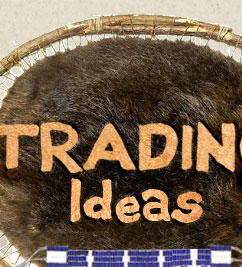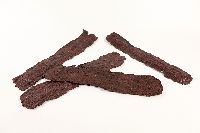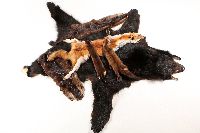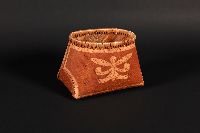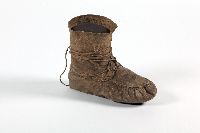Home > To Make Things Clear > The Algonquians - To Make Things Clear
The Algonquians
There were numerous Algonquian nations in the northeastern part of North America. The Micmac, Abenaki, Algonquin and Innu, to name just a few, are Algonquian nations. We often think that, because they were semi-nomadic, the Algonquians did not have established territories. On the contrary, each nation moved around within its own territory. In eastern Canada the Algonquians mainly inhabited the Canadian Shield and the Appalachian region. Since the soil and climate of their territory was not suitable for horticulture they hunted, trapped, fished and gathered wild fruit.
The dwellings of the Algonquians were not very big, but they could be transported easily. They used bark or hides to cover a wooden framework. Today we call these dwellings wigwams or teepees, but each nation had a different name in its own language. When a group moved they brought the hides or bark with them, but left the wood poles behind to be used again when they returned. They made new poles at the next campsite or used those that they had left previously. In winter everyone travelled on snowshoes and baggage was transported on toboggans. The men went ahead to break the trail so that travel was easier for the women and children. During the three other seasons the main means of transportation was the canoe.
The Algonquians moved and hunted according to the seasons. In summer they settled close to waterways where they fished and picked wild fruit. They hunted deer and beaver during winter and migrating birds in the spring. For the Algonquians deer were the main source of food. They completed their diet with small game, such as hare and partridge.
The Algonquians lived in small groups composed of members of the same family. There was a great deal to do, even if there were not many in the group. The men provided food by hunting, trapping and fishing. They were also the ones who engaged in warfare. The women, for their part, processed what the men brought back and gathered wild fruit, in addition to hunting small game themselves. They prepared the meat, tanned the hides and made clothing. The women also took care of the young children. When the children reached the age of five, their grandparents participated in their education as well.
The political structure of the Algonquians was simple compared to that of the Iroquoians. The small family groups formed bands which in turn formed nations. Each of these entities chose chiefs. The chief of the nation was chosen when all the families gathered together in summer. The family chiefs and the chief of the nation were treated like all the other members of the group. The role of chief consisted of representing the group when councils were held. Among the Algonquians, the chiefs had to be good hunters, but also good orators.
